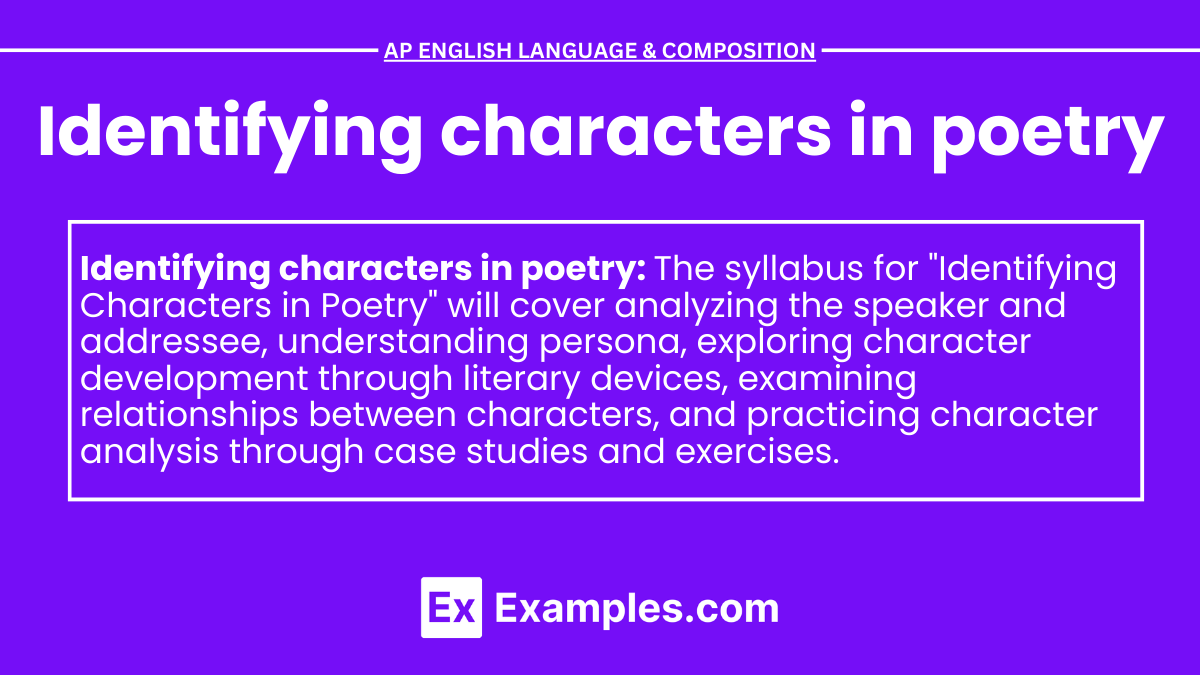In the study of AP English Language and Composition, identifying characters in poetry is a crucial skill that enhances the understanding of literary works. Unlike prose, where characters are often explicitly detailed, poetry requires a nuanced approach to discern the personalities, motives, and relationships within the text. This skill is vital not only for academic essay writing but also for crafting insightful argumentative speeches. By analyzing the rhetorical sentences and other literary devices used in poems, students can uncover the deeper meanings and thematic elements that characters contribute to. This guide aims to equip students with the tools needed to excel in the analysis of characters in poetry, thereby improving their performance in AP English Language and Literature.
Learning Objectives
By the end of this lesson on identifying characters in poetry, students will be able to develop a final thesis statement that articulates the role and significance of characters in a poem. They will enhance their critical thinking skills by analyzing the use of rhetorical sentences and rhetorical statements to reveal character traits and relationships. Additionally, students will learn to incorporate their findings into a well-structured persuasive essay, utilizing cumulative sentences to build and support their arguments effectively.
Understanding Characters in Poetry
In poetry, characters can be as fully developed as in prose, but they are often presented more abstractly. Characters can include the speaker, the addressee, and any figures mentioned in the text.
Key Terms
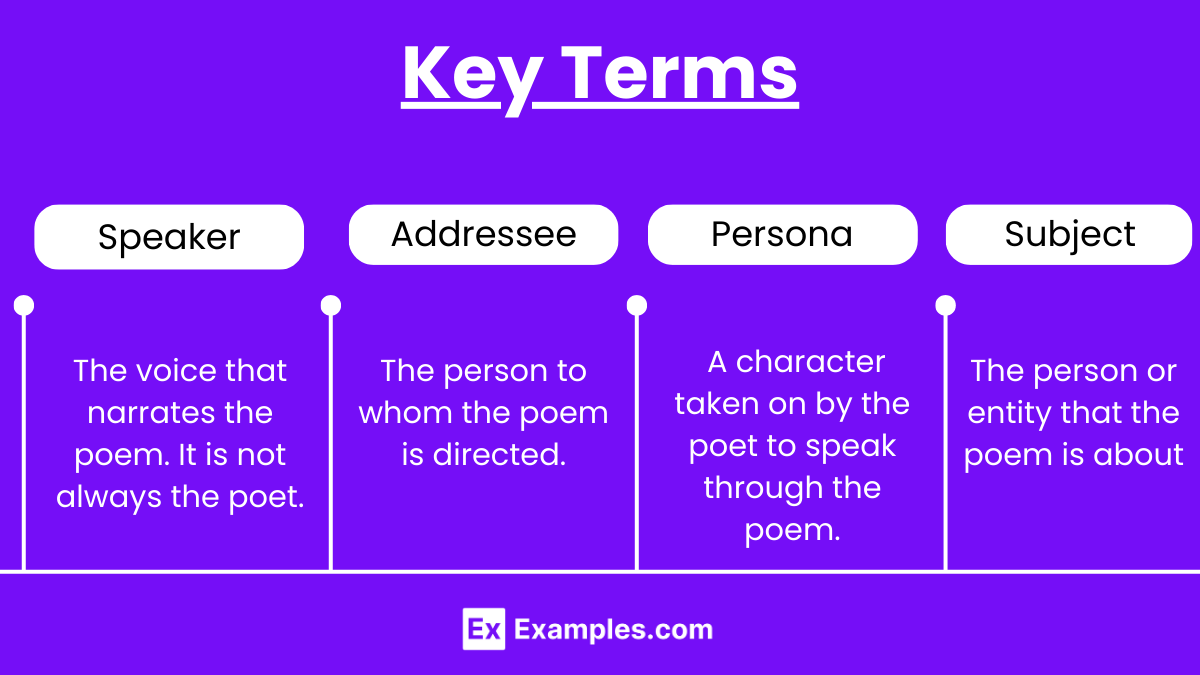
- Speaker: The voice that narrates the poem. It is not always the poet.
- Addressee: The person to whom the poem is directed.
- Persona: A character taken on by the poet to speak through the poem.
- Subject: The person or entity that the poem is about.
Analyzing the Speaker
Speaker vs. Poet:
- The speaker is the narrative voice in the poem. It’s essential to distinguish the speaker from the poet, as they may have different perspectives.
- Understanding the speaker’s background, personality, and motives can provide deeper insight into the poem.
Example:
- In Robert Browning’s “My Last Duchess,” the speaker is the Duke, not Browning himself. The Duke’s words reveal his character and the poem’s themes of power and jealousy.
Identifying the Addressee
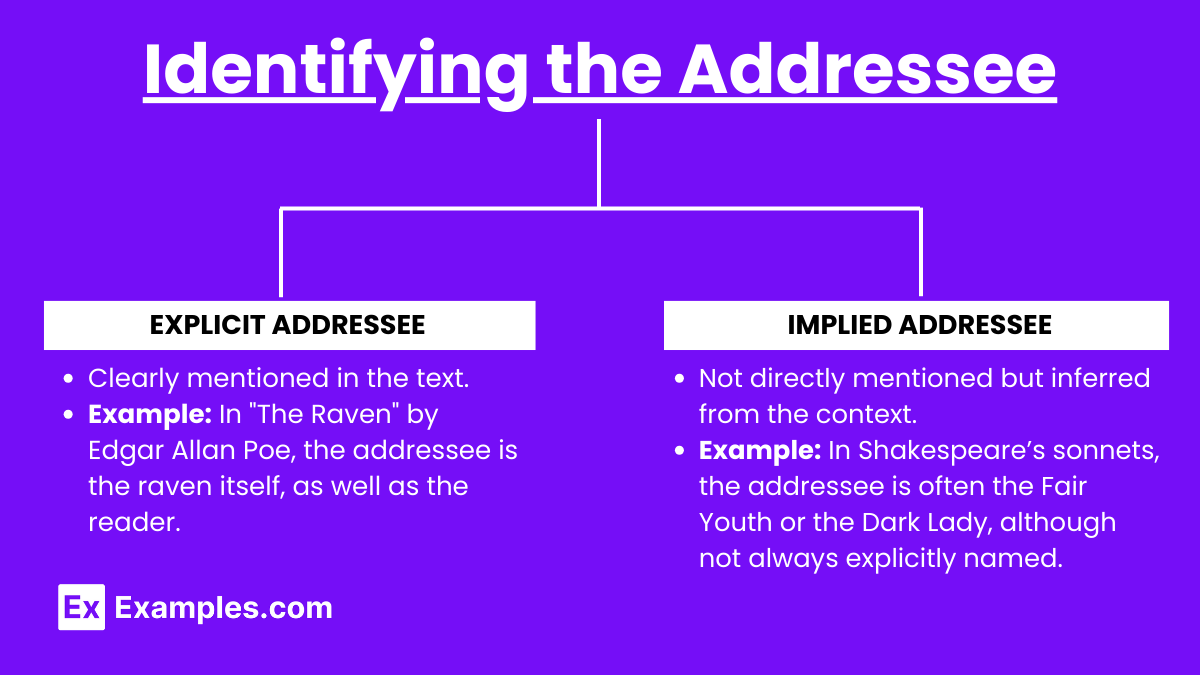
The addressee is the person or entity to whom the poem is addressed. This can be explicit or implied.
Explicit Addressee:
- Clearly mentioned in the text.
- Example: In “The Raven” by Edgar Allan Poe, the addressee is the raven itself, as well as the reader.
Implied Addressee:
- Not directly mentioned but inferred from the context.
- Example: In Shakespeare’s sonnets, the addressee is often the Fair Youth or the Dark Lady, although not always explicitly named.
Character Development Through Literary Devices
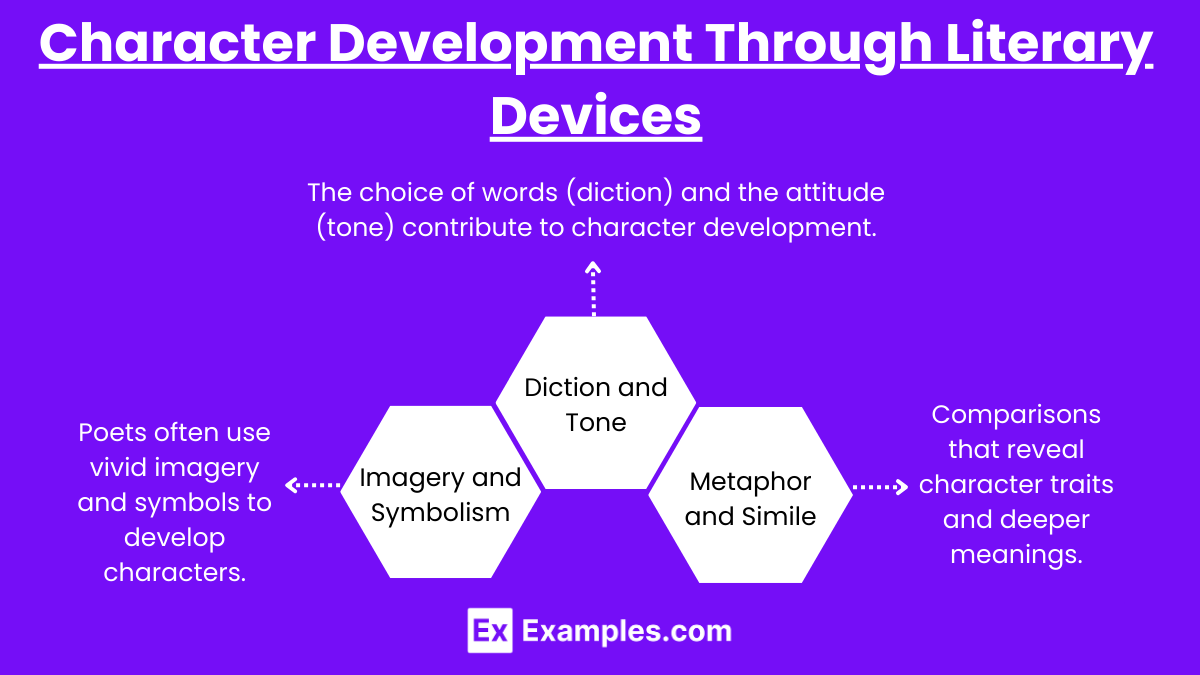
Imagery and Symbolism:
- Poets often use vivid imagery and symbols to develop characters.
- Example: In Sylvia Plath’s “Lady Lazarus,” the character is developed through imagery of resurrection and rebirth.
Diction and Tone:
- The choice of words (diction) and the attitude (tone) contribute to character development.
- Example: In Langston Hughes’s “The Negro Speaks of Rivers,” the dignified and reflective tone highlights the speaker’s connection to history and identity.
Metaphor and Simile:
- Comparisons that reveal character traits and deeper meanings.
- Example: In Emily Dickinson’s “Because I could not stop for Death,” Death is personified as a polite suitor, revealing the speaker’s acceptance of mortality.
Interpreting Relationships Between Characters
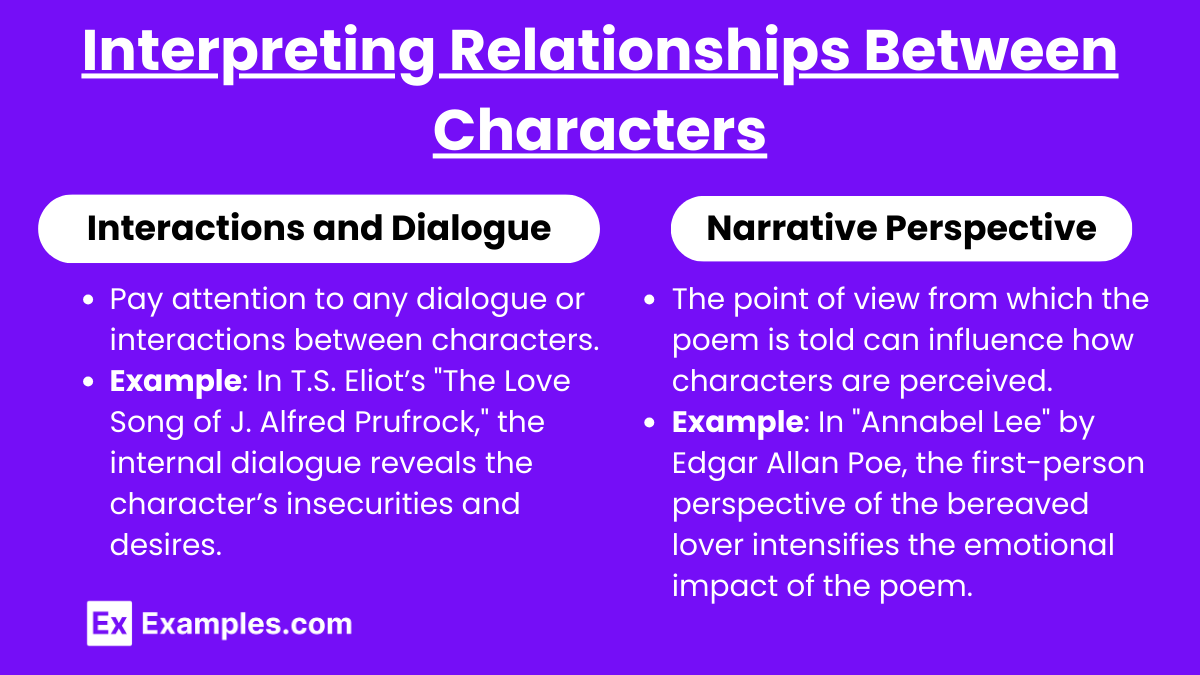
Understanding the dynamics between characters can enhance the interpretation of the poem.
Interactions and Dialogue:
- Pay attention to any dialogue or interactions between characters.
- Example: In T.S. Eliot’s “The Love Song of J. Alfred Prufrock,” the internal dialogue reveals the character’s insecurities and desires.
Narrative Perspective:
- The point of view from which the poem is told can influence how characters are perceived.
- Example: In “Annabel Lee” by Edgar Allan Poe, the first-person perspective of the bereaved lover intensifies the emotional impact of the poem.
Case Studies of Character Analysis in Poetry
Case Study 1: “Ode to a Nightingale” by John Keats
- Speaker: A poet who contrasts his own life with the idealized existence of the nightingale.
- Addressee: The nightingale, representing transcendence and immortality.
- Character Development: Through rich imagery and a melancholic tone, Keats explores themes of mortality and the desire for escape.
Case Study 2: “The Road Not Taken” by Robert Frost
- Speaker: A traveler reflecting on life’s choices.
- Addressee: Implied to be the reader or the speaker’s future self.
- Character Development: The use of metaphor and a contemplative tone reveals the character’s introspective nature and the impact of decisions.

